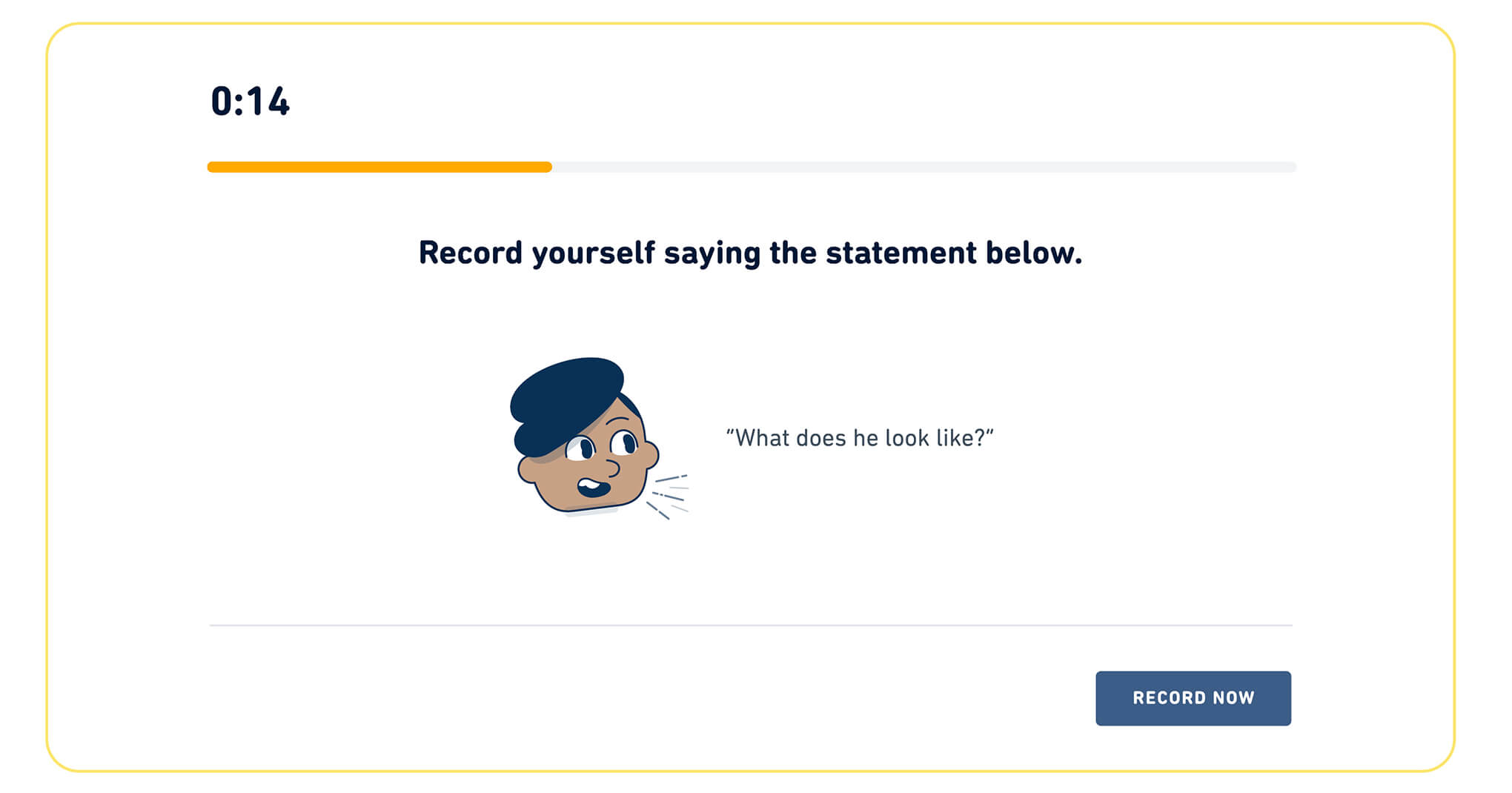Introduction
If you want to prove your English proficiency level, the Duolingo English Test is one of the easiest and most convenient ways to do it.
And the best part?
Thousands of institutions across the globe now accept a Duolingo English Test score as a valid indicator of your proficiency level.
But the test can be tricky, especially the Read Aloud questions.
This question type looks simple, but you have to be careful.
One little mistake could lead to a score reduction on test day.
Keep reading to learn how to avoid these mistakes and score high for Read Aloud questions on test day.
Or if you are ready to practice, try this free practice question.


Over 100 Free DET Practice Questions
Read Aloud - Everything You Need to Know
For the Read Aloud question type you will be provided with a written statement to read aloud.
Pretty simple, right?
But be careful. This little sentence is testing your pronunciation, fluency, and ability to convey meaning by the way you read.
Details:
Preparation Time
You will have 20 seconds to prepare before you are required to speak. Read carefully.
Question Frequency
You will see between 3 to 5 Read Aloud questions on the test.
Adaptive Difficulty
If you perform well, the sentences will get longer and harder.
No Re-recordings
You cannot re-record your answer, so aim for accuracy and clarity on the first attempt.
Read Aloud - Quick Tips
- Practice Out Loud: Utilize the 20-second preparation time to practice saying the sentence out loud at least once before the official recording.
- Maintain Eye Contact: While speaking, keep your eyes on the sentence so you do not lose your place.
- Natural Delivery: Speak in a natural tone of voice, as if you were speaking on the phone with a friend.
- Accuracy is Key: One of the biggest mistakes students make is adding or omitting words from their recording. Aim for accuracy.
Read Aloud - Common Mistakes to Avoid
- Forgetting Final Letters: Pay close attention to final sounds, particularly plural “s”, in a word like “bananas”, or the final “s” in a singular verb like “He talks…”
- Word Habit: Avoid replacing words or phrases with similar-sounding ones that you use often. For example, you might usually say “First of all” but the sentence reads “Firstly.” Be sure to read what is written, not what you feel comfortable saying.
- Similar-Sounding Words: Be careful of words that sound similar but have slightly different pronunciations (e.g., “affect” vs. “effect”).
- Dropping Function Words: What are function words? For example, articles (a, an, the), prepositions (in, on, at), or conjunctions (and, but, or). Take your time and make sure you pronounce all of the words clearly and accurately, even function words.
- Improper Stress and Intonation: In a simple sentence like “I have a dog,” words like “have” and “dog” will be stressed more than a function word like “a.” Consider stressing the right words and copying native speaker speech patterns when submitting your official recording.
Read Aloud - Intelligibility: How to Be Understood
- Stress Content Words: Emphasize nouns, verbs, adjectives, and adverbs, which carry the most meaning in a sentence.
- Pause at Commas: Use commas as natural pauses in your speech. This improves clarity and allows listeners to process information.
- Avoid Monotone Delivery: Avoid the robot voice and pretend like you care about the sentence you are reading.
- Intonation Patterns: Use a rising intonation before commas and question marks, and a falling intonation before periods. It sounds more natural.
- Take Your Time: Do not be in a hurry. Test-takers tend to speak too quickly because they are nervous. Take a deep breath before you speak and focus on sounding clear and comfortable.
Read Aloud - App and Website Recommendations
- Otter.ai: There are both free and paid services, but you can generate transcripts of your speech for review.
- ELSA Speech Analyzer: I highly recommend this paid resource for anyone who wants granular feedback on their pronunciation and intelligibility. If you need to improve your speaking score, start using this site.
- Speech-to-Text Chrome Plugins: Many browser plugins, including those powered by ChatGPT, offer speech-to-text functionality.
- Siri: Start talking with the voice assistant built into your smartphone. Does it understand you? Practice uttering sentences with words or phrases you find challenging to pronounce and identify whether or not you are understood.
Read Aloud - How to Practice
-
- Voice-to-Text Drills: Find sentences in your favorite book, movie, or podcast and use a voice-to-text tool to get immediate feedback. I like voice typing on Google Docs.
- DET Practice Resources: Utilize free practice questions from the Duolingo English Test website and YouTube, as well as paid resources like TST Prep’s Emergency Practice Pack for the Duolingo English Test.
- Error Patterns: Check to see if there are specific words or sounds the text-to-speech software has trouble understanding and plan to practice those sounds daily.


Over 100 Free DET Practice Questions
Conclusion
The Read Aloud questions LOOK easy, which makes them tricky to answer correctly. Just take your time, use the full 20 seconds to prepare, and speak in a clear, comfortable, and confident tone.
Do not forget to read the sentence exactly as it is written and do not replace words or omit words.
Practice with speech-to-text software to leverage technology to improve your pronunciation and speech music.
Did that help?
Do you have any more tips for this question type?
Share in the comments below and help us all improve.









